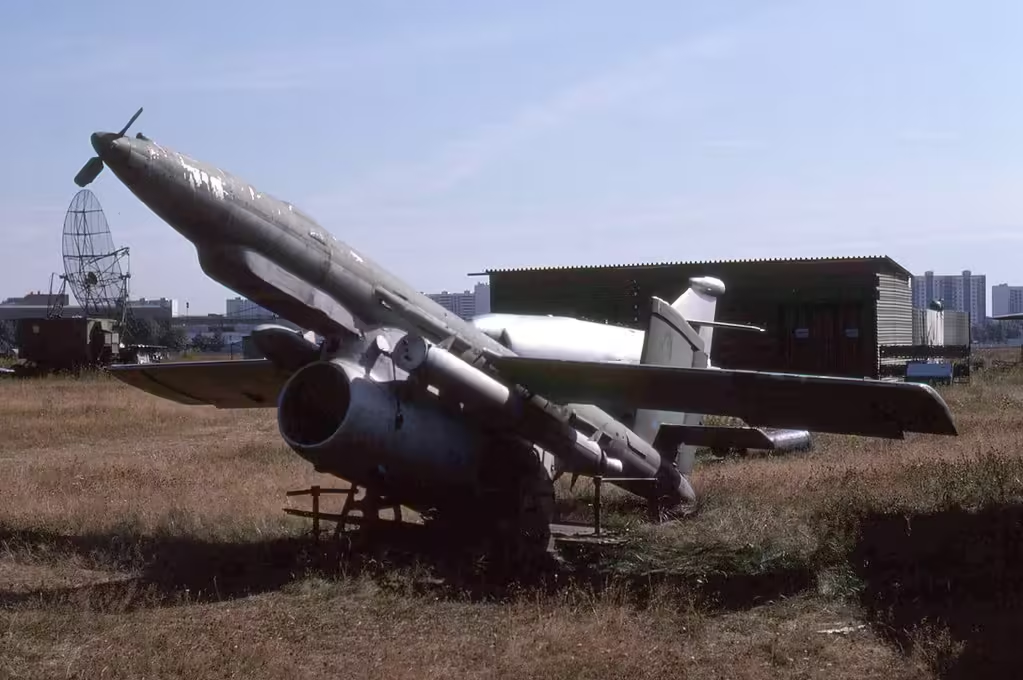
Table of Contents
Summary and Key Points: In July 1946, the U.S. conducted Operation Crossroads at Bikini Atoll to study the effects of nuclear weapons.

To simulate crew exposure, two experiments, Able and Baker, detonated atomic bombs near a fleet of 95 Navy ships carrying live animals. On July 1, five ships were sunk by 22-23 kiloton bombs dropped from B-29s during the Able test.
In the July 25 Baker test, an underwater explosion caused massive radioactive contamination, severe damage, and the destruction of eight ships. The operation exposed the destruction caused by atomic bombs and how they affected the safety of naval ships and possibly future personnel.
Less than a year after dropping two atomic bombs on Japan, the United States conducted Operation Crossroads, a series of nuclear weapons tests in the Bikini Atoll Lagoon. This happened in July 1946. Operation Crossroads would be the first nuclear test and nuclear explosion since Nagasaki and Robert Oppenheimer’s infamous Trinity explosion the previous July.

A target fleet of ninety-five naval vessels was deployed in the lake at varying distances from the detonation site to test and investigate the effects of the new nuclear weapons. The Navy had to clear the lagoon of Coral Heads with ten short tons of dynamite to make way for so many ships. The ships were located at a density of 20 ships per square mile, much higher than allowed by US military doctrine but ideal for estimating the effect of a nuclear explosion in relation to the distance from the detonation.
The support fleet, consisting of more than 150 ships, retreated ten miles from Bikini Atoll and awaited detonation until ninety-five test ships were in position and loaded with animal subjects for “diagnosis, treatment, and possible future general protection of the ship’s crew. This bomb would be detonated. can.”
Floating guinea pigs B-29
Operational testing was enabled at 0900 on 1 July after a B-29 Superfortress dropped the Gilda nuclear bomb. At 520 feet in the air, Gilda exploded, causing 22-23 kilotons of damage.
An assortment of naval warships, including battleships, aircraft carriers,, battleships, destroyers, submarines, landing ships, transports, oilers, a floating drydock and even three Axis ships, were stationed in the lake to face the full force of the guild. A variety of live animals were spread throughout the ships, including 200 chickens, 60 guinea pigs, 204 goats, 5,000 mice, 200 mice, and a variety of insects.
Five ships were sunk due to damage sustained during competent trials (with many more topside losses); The first two to go down were two deadly transports, followed immediately by two destroyers, and the last ship to go down the next day was a Japanese cruiser.
Reporting to the audience back home, over a hundred members of the press attended the test and found that the effect of the explosion on the fleet was not particularly significant. Secretary of the Navy James Forrestal responded to the coverage by saying that military ships were unlikely to sink without undersea damage. The idea will be put into practice in the second bikini trial in three weeks.
World’s first underwater nuclear detonation
On July 25, a nuclear bomb was placed behind the landing craft during the second nuclear test at Bikini Atoll. Ninety feet below the surface, the weapon exploded. Instead of being damaged by air pressure, ships were damaged by water pressure, causing eight ships to sink. Perhaps most importantly, the explosion sent a large amount of radioactive water onto the ship’s deck, contaminating it everywhere. Most of the ships were eventually destroyed after cleaning efforts failed.
About the Author: Harrison Kass
The author of more than 1,000 articles on international politics, Harrison Kass specializes in writing on the military and national security. Harrison is a pilot, lawyer, guitarist, and former minor league hockey player. He joined the US Air Force as a trainee pilot but was later medically discharged. Harrison holds an MA from New York University, a JD from the University of Oregon, and a BA from Lake Forest College. Harrison lets Dokken listen.
READ | F-16XL: A ‘lost’ F-16 Fighting Falcon powered by steroids
READ | Why human remains from the Titanic disaster have not been found


2 thoughts on “B-29s dropped atomic bombs on a fleet of battleships and aircraft carriers.”